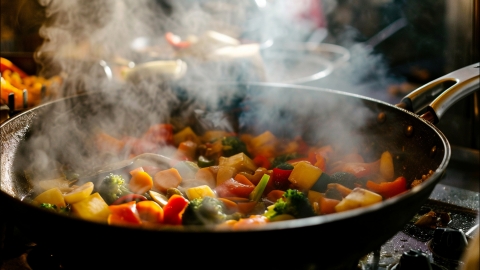What foods are good to eat for damp-heat in the body?
Generally, individuals with a damp-heat constitution should consume foods that have functions of clearing heat and eliminating dampness. These foods mainly include wax gourd (winter melon), coix seed (Job's tears), mung beans, red adzuki beans, and bitter melon. These foods can help regulate the internal damp-heat condition through their unique properties. The specific analysis is as follows:
1. Wax Gourd (Winter Melon)
Wax gourd is cold in nature and contains a high amount of water, which can promote the excretion of excess water from the body. Damp-heat within the body often arises due to accumulated dampness that transforms into heat. Wax gourd can increase urine output, accelerate dampness metabolism, and its cold nature mildly clears internal heat, relieving discomforts such as dry mouth, bitter taste, and heavy feeling in the body caused by damp-heat.
2. Coix Seed (Job's Tears)
Coix seed has a sweet and bland taste and is known for strengthening the spleen to resolve dampness, clearing heat, and promoting the discharge of pus. In traditional Chinese medicine, the spleen is responsible for transforming and transporting dampness. Damp-heat conditions are often related to spleen deficiency and impaired transportation function. Coix seed can strengthen the spleen and enhance the body's ability to transform and transport dampness, reducing dampness formation. It also directly clears internal damp-heat, improving symptoms such as abdominal distension, dark yellow urine, and sticky, unsatisfactory bowel movements caused by damp-heat.

3. Mung Beans
Mung beans have a sweet taste and cold nature, excelling in clearing summerheat, relieving heat, promoting urination, and detoxification. Internal damp-heat easily generates internal heat. The cold nature of mung beans clears this internal heat, while its diuretic effect promotes the elimination of damp-heat through urine, alleviating symptoms such as sore throat, skin acne, and reduced urine output caused by damp-heat.
4. Red Adzuki Beans
Red adzuki beans have a sweet and sour taste and are neutral in nature. They promote urination, reduce edema, detoxify, and discharge pus. Compared to coix seed, red adzuki beans have a milder diuretic effect and enter the blood level, helping to eliminate dampness and turbidity in the body. They are suitable for individuals with damp-heat accompanied by mild edema, difficult urination, or skin conditions such as eczema and sores.
5. Bitter Melon
Bitter melon is bitter in taste and cold in nature, having effects of clearing heat, purging fire, detoxifying, and removing dampness. Its bitter flavor stimulates the secretion of digestive fluids, helping to improve poor appetite caused by damp-heat. Its cold nature powerfully clears internal damp-heat, alleviating symptoms such as mouth and tongue ulcers, dry stools, irritability, and anger caused by damp-heat.
In addition, individuals with damp-heat may also consume moderate amounts of poria (Poria cocos) and lotus seeds. At the same time, in daily life, they should avoid excessive consumption of spicy, greasy, and sweet foods to prevent exacerbating internal damp-heat.









